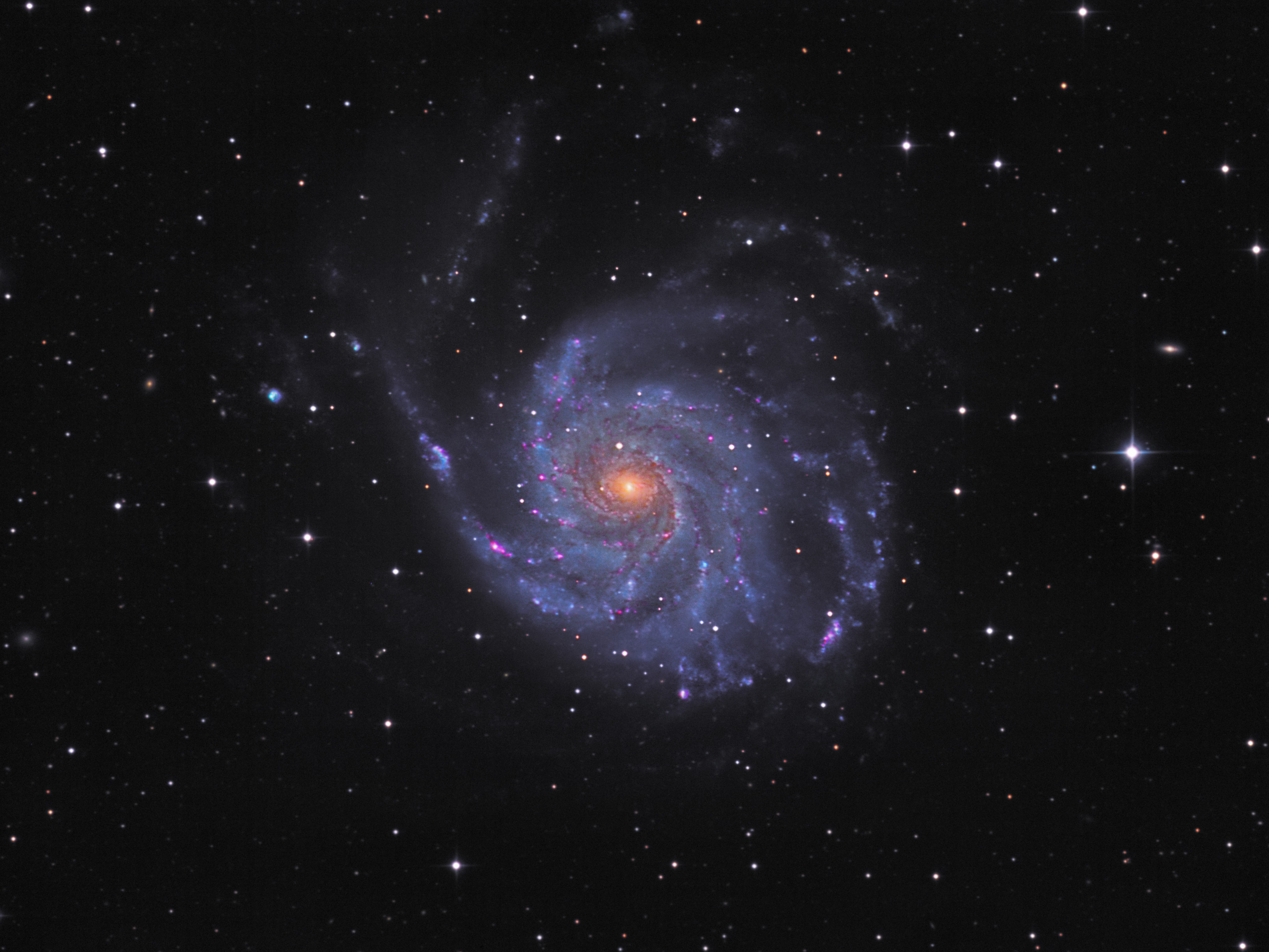M101: Spiral Galaxy
Camera: Finger Lakes Instrumentation MicroLine ML8300 with FLI CFW-2-7 Filter Wheel
Mount: Paramount ME
Scope: Supernova Astrograph - 12.5" Zambuto - My Design
Colors: L:R:G:B
Exposure Time: 26x10 min L: 15x5 minutes RGB binned
Post-Production: MaxIm DL, CCDStack, PixInsight, and Photoshop CS5
Big, beautiful spiral galaxy M101 is one of the last entries in Charles Messier's famous catalog, but definitely not one of the least. About 170,000 light-years across, this galaxy is enormous, almost twice the size of our own Milky Way galaxy. M101 was also one of the original spiral nebulae observed by Lord Rosse's large 19th century telescope, the Leviathan of Parsontown. Also known as the Pinwheel Galaxy, M101 lies within the boundaries of the northern constellation Ursa Major. Why do many galaxies appear as spirals? A striking example is M101, shown above, whose relatively close distance of about 27 million light years allows it to be studied in some detail. Recent evidence indicates that a close gravitational interaction with a neighboring galaxy created waves of high mass and condensed gas which continue to orbit the galaxy center. These waves compress existing gas and cause star formation. One result is that M101 has several extremely bright star-forming regions (called HII regions) spread across its spiral arms. M101 is so large that its immense gravity distorts smaller nearby galaxies. (Text from APOD)

 Sean Olson Design
Sean Olson Design